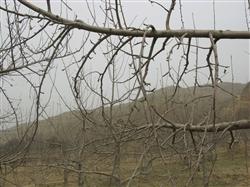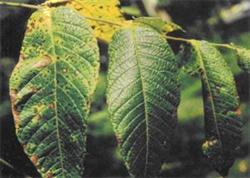How to prune apple trees in summer

How to prune apple trees in summer? Please guide the summer pruning of apple trees, also known as growing period pruning. Pruning during the growing period will cut off leafy branches, which has a greater impact on the growth of fruit trees, so it should be as light as possible. In addition, summer pruning is an auxiliary work of winter pruning, which can keep the budding shoots good and bad in time, regulate the growth and development of the new shoots and correct their growth posture and direction. In this way, winter pruning can avoid big cuts, resulting in more damage to the tree. Specific pruning techniques are as follows: sprouting: sprouting, also known as eye injury, refers to 0.2-0.3 cm above (or below) the branch or bud before the sprouting of the fruit tree in spring, with a knife or cut a crescent-shaped incision, deep into the xylem. When it is scratched on the bud or branch, part of the nutrients and water cannot rise over the wound and flow into the bud or branch, thus promoting its vigorous growth; on the contrary, when performing an operation under the bud or branch, it has the opposite purpose and can reduce its growth power. Sprouting has a significant effect on the increase of young and prosperous branches. De-sprouting: removing useless or harmful branches from spring to early summer is called de-sprouting. The methods of eliminating cuteness are as follows: 1. After cutting off the long branches or big branches, there are many sprouting tillers near the cutting mouth, which is suitable to be removed at the beginning of the bud. two。 When the young tree is pruning, the sprouting branches that hinder the growth of the trunk or main branch should be removed as soon as possible to facilitate the growth of the trunk or main branch. 3. When there are too many new shoots as side branches or side branches, it is appropriate to remove some of the sprouting branches so as to avoid dense growth. 4. Fruit trees with short fruit branches, such as short branches are too dense, often contain each other, so that the buds on the short branches can not fully differentiate into flower buds, so it is appropriate to remove the weak sprouting branches so that the remaining short branches can develop into fruiting branches. The main purpose of de-sprouting is to reduce the useless consumption of nutrients, to ensure the growth of useful branches and buds and the ventilation and light of the crown. Too many buds on the back of the branch can be erased at intervals of 20 to 30 centimeters. Sometimes, in order to protect the excessively large cutting blade, one or two flat and oblique buds can be left for the sprouting tillers, and the rest can be erased. Multi-loop engraving: in order to prevent baldness, the branches with strong growth are treated before budding. That is, in the place where the branches need to be carved with a ring cutter or pruning shearing ring, which is as deep as xylem, it can also be carved every 15 to 20 centimeters. This method can promote a large number of medium-long branches and prevent the occurrence of smooth branches. Girdling: also known as circular peeling, which refers to peeling off a circle of bark at the base of the branch, which is about 1 inch, 8 centimeters, 10 centimeters in diameter at the base of the branch. The widest can not be more than 1 cm, the narrowest can not be less than 1 mm, 20-30 days after peeling can heal more suitable, for the wider peeling, can be wrapped with plastic film or Kraft paper, 5 days to remove the bandage. The strong and strong branches of young and prosperous trees are mainly, and the thin and weak branches should not be girdled. When girdling the trunk, backbone branches, large auxiliary branches and branch groups, appropriate treatment should be taken. Because the girdling intercepts the downward transport of assimilated nutrients produced by leaves, the root growth is affected, on the contrary, the root absorption is weakened, which will slowly weaken the growth of new shoots. Therefore, in the application of girdling, it is necessary to apply more fertilizer and water to make the branches grow strong. In order to improve the effect of ring peeling, foliar fertilizer can be used for ring peeling. Heart-picking: the measure to remove the tender part of the top of a new shoot during the growing season is called heart-picking. In order to control growth, coring new shoots is beneficial to nutrition accumulation and flower bud formation, increase fruit setting rate and promote fruit enlargement. Coring can promote strong branches to increase branch order and achieve the purpose of relaxing growth potential. The coring of strong shoots for 2 times in May to June is beneficial to the cultivation of branches and promote flower formation; coring of competitive branches and erect branches can strengthen the growth of elongated branches and cultivate strong branches; coring at the base of autumn shoots in the first ten days of August can form 2-3 accessory flower buds at the junction of spring and autumn shoots; when the extended branches reach 60 cm, secondary branches can be used to expand the crown and accelerate the forming. In the crown of the early fruiting stage, the growing branches of the inner chamber can be enucleated to promote the formation of fruiting branches so as to increase the fruit. Twisting: from late May to the first and middle of June, for erect branches, competitive branches, dense branches, etc., at the base of the new shoot, the semi-lignified part is twisted 90 °with the hand, and then twisted 180 °obliquely below, so that it is drooping and fixed at the branch. After twisting shoots, the vegetative growth potential of branches was frustrated, and nutrients accumulated locally, which had the effect of promoting short branches and promoting flower buds. After twisting, the twisted parts should be kept round, free from splitting and breaking, and do not hurt the leaves. Branch drawing: it can be divided into spring branch and summer branch. The purpose of pulling branches is to correct the angle and direction of branch extension. If the time of pulling branches is different, the effect is also different. Young and prosperous trees pull branches in spring, after sap flow to before sprouting. The main purpose is to open the angle, promote sprouting, and prevent baldness. After pulling the backbone branch, the base angle is 45-50 degrees, and the waist angle is 60-70 degrees. The auxiliary branches should be pulled horizontally, there should be a cushion at the joint of the branches and ropes, and the binding branches should be loose. Attention should be paid to adjusting the extension direction of the branch while pulling the branch opening angle. The method of branch drawing from the end of June to the first and middle of July is the same as that in spring. its main purpose is to strengthen the differentiation of flower buds, solve the ventilation and light transmission of trees, improve fruit quality and improve coloring. Click to get more apple tree planting techniques click to get more fruit planting techniques
- Prev

What should I pay attention to when cutting apple trees in winter?
What should I pay attention to when cutting apple trees in winter? Please instruct the apple trees to pay attention to the following points in winter pruning: ① look at the tree age: young trees and early fruit trees should be trimmed less, the degree of pruning should be light, pay attention to the cultivation of tree type and fruiting branch group; trees should be properly re-pruned in full fruit period, pay attention to rotation fruiting branch group; heavy pruning of senescent trees, renew fruiting branch group. ...
- Next

What are the main diseases and insect pests of hickory?
What are the main diseases and insect pests of hickory? How should prevention and control be carried out? Please guide Carya cathayensis diseases and insect pests is an important factor affecting the yield of hickory, control of diseases and insect pests can play a role in protecting forests, promoting growth, increasing yield and so on. The common diseases of Carya cathayensis are branch blight and fruit tree rot. It's common.
Related
- Moge, come on! The staff of the peasant association in the producing area of cantaloupe were frightened when the crowd gathered.
- Causes and Solutions of low Fruit setting rate of Apple
- Symptoms and control measures of passion fruit virus disease
- Fruit growing lesson: how do apple orchards keep high yields?
- Can you build orchards in the mountains? What are the pros and cons?
- How to manage the coloring period of Crisson grape?
- This paper introduces the processing technology of two kinds of fig products.
- How much is a month for retired teachers in rural areas by 2020?
- How can strawberry planting increase sugar content? We should pay attention to management in many aspects.
- What are the cultivation techniques on how to improve the yield of golden fruit?

